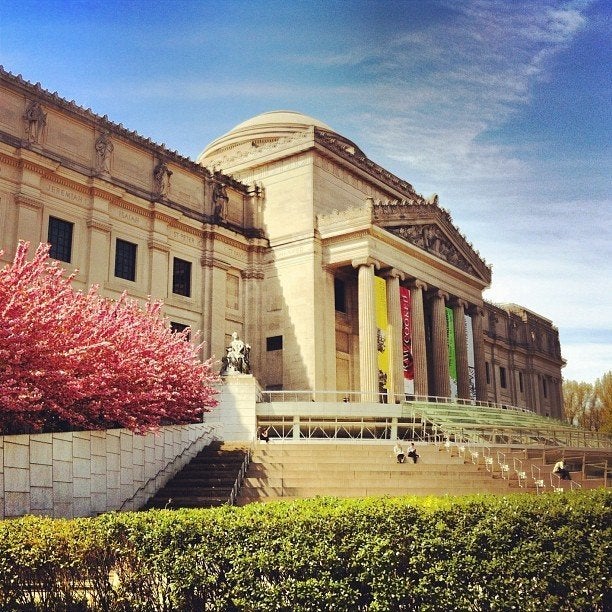
A remarkable poetry exhibit opened at the Smithsonian's National Portrait Gallery last week. "Poetic Likeness: Modern American Poets" features portraits of more than 50 of America's greats, from Walt Whitman, who laid the groundwork for the modernist movement, to contemporary favorite Adrienne Rich, who passed away in March of this year.
For those of us who don't live in Washington DC, much of the exhibit is available online at the gallery's website, which showcases many of the portraits along with some useful commentary. The highlight of the exhibit online is a section entitled "The Spoken Word," which features audio recordings of poets reading from their work. You can hear Langston Hughes read from "The Negro Speaks of Rivers":
I've known rivers:
I've known rivers ancient as the world and older than the flow of human blood in human veins.
My soul has grown deep like the rivers.
The exhibit casts something of a wide net in identifying "modern" poets. David C Ward, the gallery's curator (and a poet himself), explained the gallery's thinking: "The poet had to respond to the immediacy of modern society -- which I think is the core characteristic of modern poetry." Or, as Ezra Pound put it in his poem "Hugh Selwyn Mauberly,"
The age demanded an image
Of its accelerated grimace,
Something for the modern stage,
"Poetic Likeness" certainly succeeds in identifying and celebrating the evolution of essentially American strands of poetry. It gives one a sense of how American poets first broke from the grand, decorous verse of the English tradition they inherited, striving instead to, as Pound famously put it, "make it new." It shows how American poetry, while never abandoning its roots entirely, evolved to include passages like this one from John Ashbery's "Paradoxes and Oxymorons":
This poem is concerned with
language on a very plain level.
Look at it talking to you.
Thanks to the Smithsonian, we can also get a good look at the poets who were (and, in some cases, are still) doing the talking. It's a great way to meditate on how American poetry has changed in response to American culture, and how it will continue to change. As Whitman put it "I tramp a perpetual journey, (come listen all!)."
The exhibit runs through April 28 in downtown Washington.